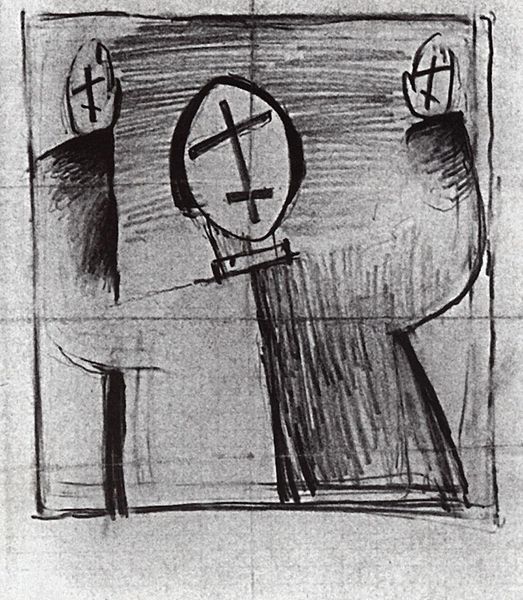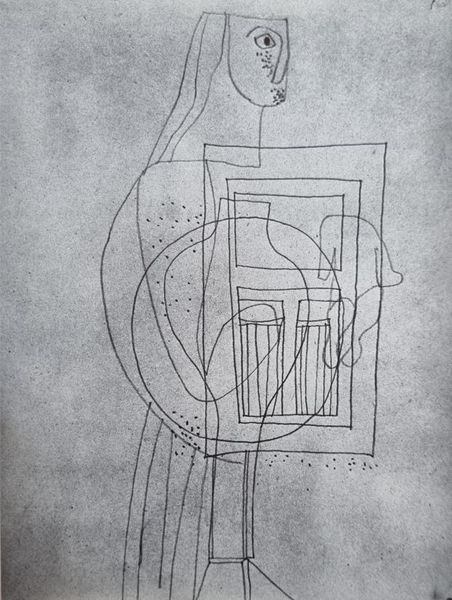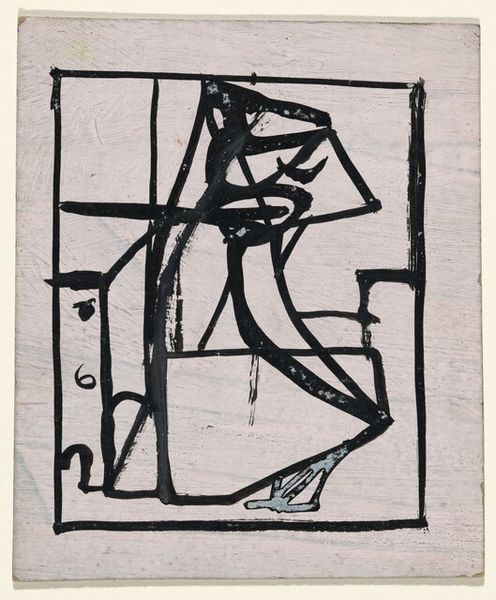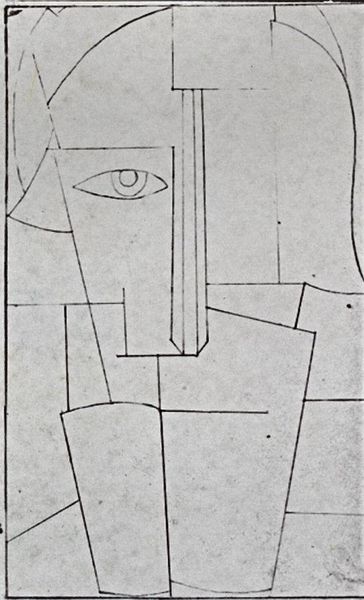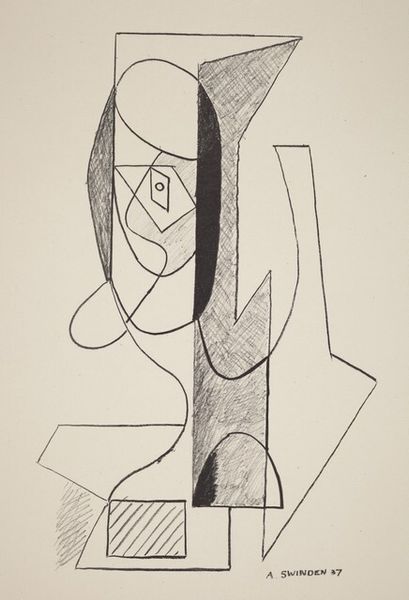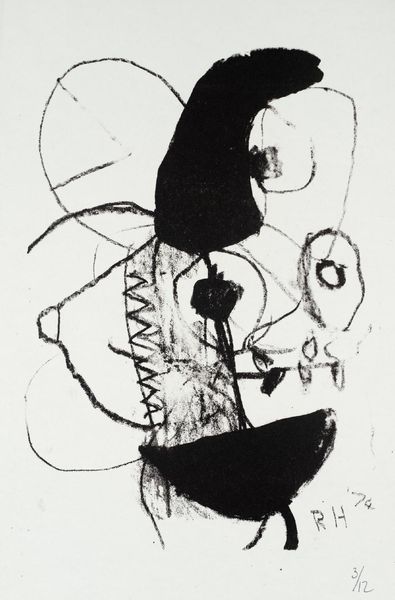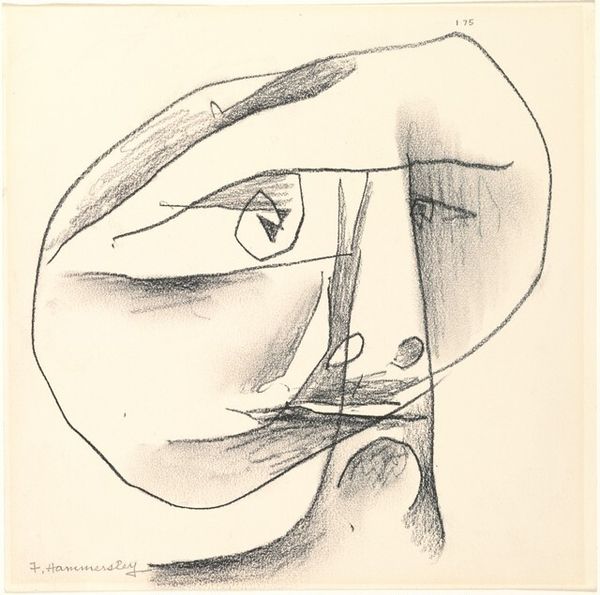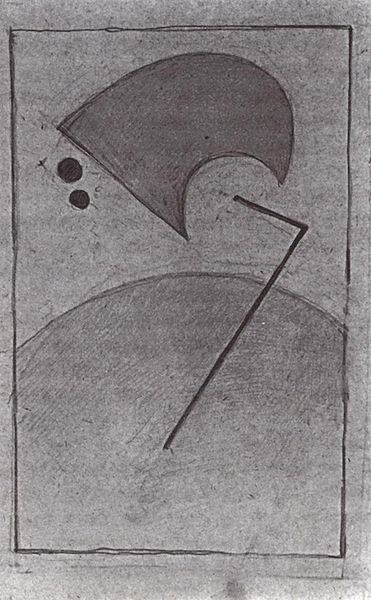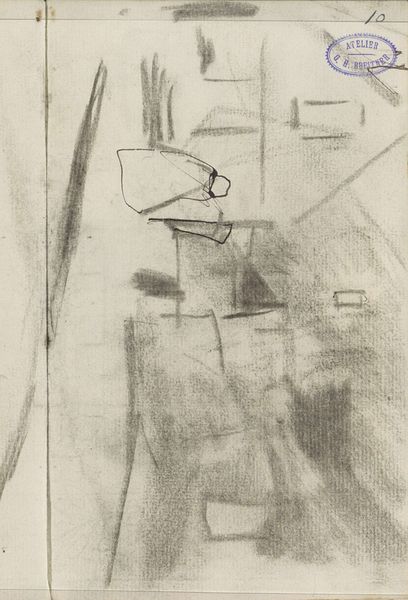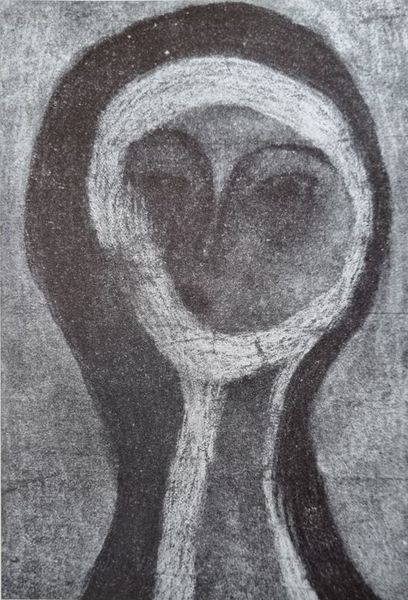
drawing, graphite
portrait
drawing
cubism
amateur sketch
quirky sketch
shading to add clarity
personal sketchbook
idea generation sketch
sketchwork
dynamic sketch
sketch
abstraction
technical sketch
graphite
sketchbook drawing
initial sketch
suprematism
Copyright: Public domain
Editor: Here we have a graphite drawing, simply titled "Head" by Kazimir Malevich. It seems like an early sketch, perhaps a study. The shapes are basic, almost childlike. What strikes me is how unfinished it appears, but in that, there's a raw energy. How do you interpret this work? Curator: Considering Malevich's body of work and its historical context, it's tempting to focus on the Suprematist elements here. But let's dig deeper into the material reality of this drawing. It’s graphite on paper. A common medium, a tool for exploration, for *thinking* through form. Do you see evidence of revisions, of the artist working through ideas in the very act of making? Editor: Definitely. The lines are tentative, and you can see where he's reworked the outline of the head. It feels immediate, like he’s grappling with the representation itself. Curator: Exactly. And what does this imply about Malevich's approach to artistic production? He isn't aiming for illusionism. He's making visible the labor, the *process* of artistic creation. This was a period of intense industrialization, where even artistic creation was starting to be seen as 'production.' Editor: So, it’s almost like he’s laying bare the nuts and bolts of making art, the initial sketchwork before any sort of finalized or stylized representation takes over. Curator: Precisely. It challenges the idea of the artwork as a polished, untouchable object. He's foregrounding the act of making, the artist's hand, the physical reality of graphite on paper, bringing ‘craft’ into ‘high art’, or vice versa. He’s working during huge changes to social classes. This “Head” isn’t necessarily a portrait of someone of power, but almost like, a working sketch of someone that could be any person in the working class. Editor: I hadn't thought of it that way. Seeing the work in terms of process and materials makes me appreciate it as more than just a preparatory sketch. It really elevates the materials used as not just materials, but things that hold immense cultural power. Curator: Absolutely. And that shifts our understanding of Malevich, not just as a Suprematist visionary, but as an artist deeply engaged with the material and social conditions of his time.
Comments
No comments
Be the first to comment and join the conversation on the ultimate creative platform.
